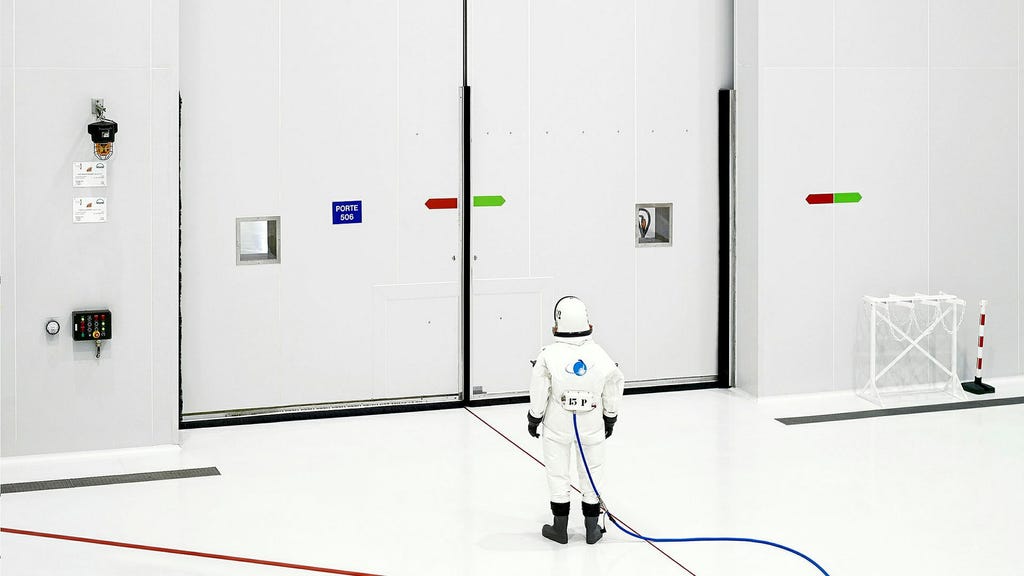”Space – A Visual Journey” at Fotografiska in Stockholm attempts a grand feat: to offer alternative perspectives on the vastness of space. It gathers a diverse collection of images, from the iconic ”Earthrise” captured by Apollo 8 to contemporary astrophotography and artistic interpretations of celestial phenomena. While the exhibition boasts visually stunning pieces, its ambition to encompass such a broad theme, ranging from scientific documentation to artistic expression, ultimately dilutes its impact. The lack of a clear narrative thread leaves the viewer wandering through a visually stimulating yet intellectually unsatisfying landscape. Like a constellation with scattered stars, the exhibition possesses individual brilliance but lacks the cohesive structure to form a compelling whole.
The exhibition showcases the breathtaking beauty of our universe, with images that depict swirling nebulae, distant galaxies, and the intricate details of planetary surfaces. Visitors are treated to a visual feast of cosmic wonders, captured by powerful telescopes and advanced imaging techniques. These images, often presented in large format, offer a sense of awe and wonder, reminding us of the immense scale and complexity of the cosmos. However, the sheer volume of visually arresting images, coupled with a lack of contextualization, can lead to a sense of sensory overload. The exhibition risks becoming a spectacle of pretty pictures rather than a deeper exploration of our relationship with space.
While the exhibition includes historically significant images, like the aforementioned ”Earthrise,” which profoundly shifted human perception of our planet’s fragility, it lacks a cohesive narrative to connect these pivotal moments. The absence of a chronological or thematic framework leaves the viewer struggling to piece together the historical and scientific advancements that have shaped our understanding of space. Instead of a guided journey through the history of space exploration, the exhibition presents a fragmented collection of images, leaving the audience to create their own connections. This lack of curatorial direction undermines the potential for a truly impactful and educational experience.
One of the exhibition’s strengths lies in its inclusion of artistic interpretations of space. These pieces offer a different perspective, moving beyond scientific observation and delving into the emotional and philosophical implications of our place in the universe. Artists explore themes of cosmic insignificance, human curiosity, and the search for extraterrestrial life, adding a layer of contemplation to the visual spectacle. However, the integration of these artistic pieces with the scientific imagery feels somewhat disjointed. The exhibition fails to fully explore the interplay between scientific discovery and artistic inspiration, missing an opportunity to enrich the viewer’s understanding of both.
Furthermore, the exhibition’s exploration of human interaction with space feels somewhat superficial. While it touches upon the history of space exploration and the technological advancements that have made it possible, it doesn’t delve deeply into the complex relationship between humanity and the cosmos. It fails to fully address the ethical, environmental, and political implications of our ventures into space, from the impact of space debris to the potential for resource exploitation. This omission prevents the exhibition from engaging with the more nuanced and challenging aspects of our relationship with the universe.
In conclusion, ”Space – A Visual Journey” at Fotografiska offers a visually captivating but ultimately unfocused exploration of the cosmos. While the exhibition boasts stunning imagery and incorporates diverse perspectives, its lack of a clear narrative and its superficial treatment of complex themes prevent it from reaching its full potential. The exhibition serves as a reminder of the awe-inspiring beauty and vastness of space, but it fails to provide a truly compelling journey through its mysteries and complexities. It leaves the viewer with a sense of wonder, but also a lingering feeling of incompleteness, like a story told in fragments without a satisfying resolution. The individual pieces shine brightly, but the exhibition as a whole lacks the cohesive gravity to bind them together into a truly impactful experience.














